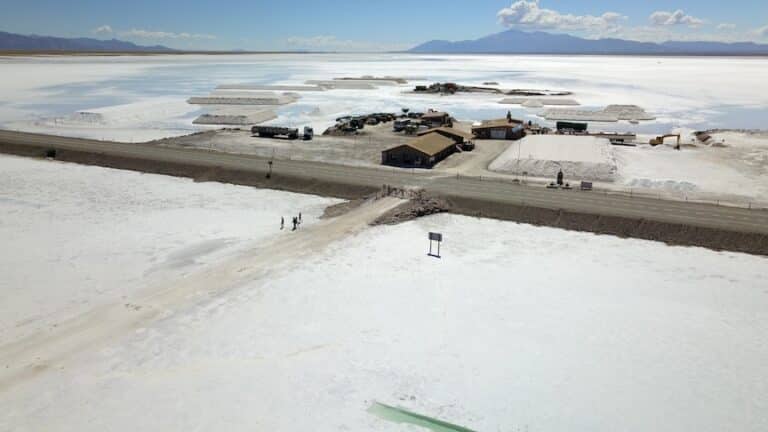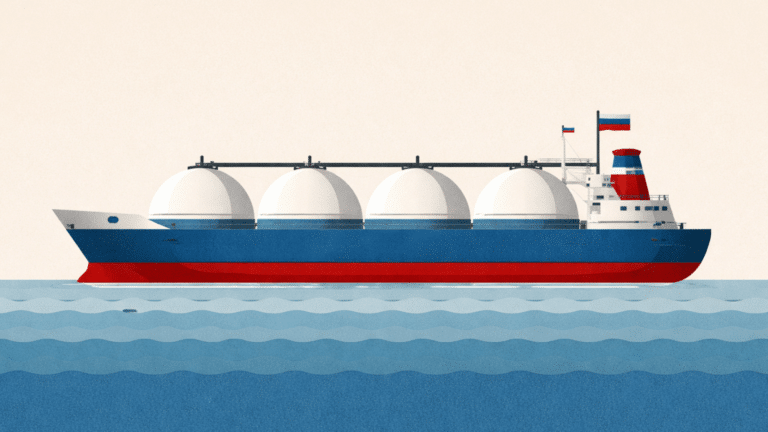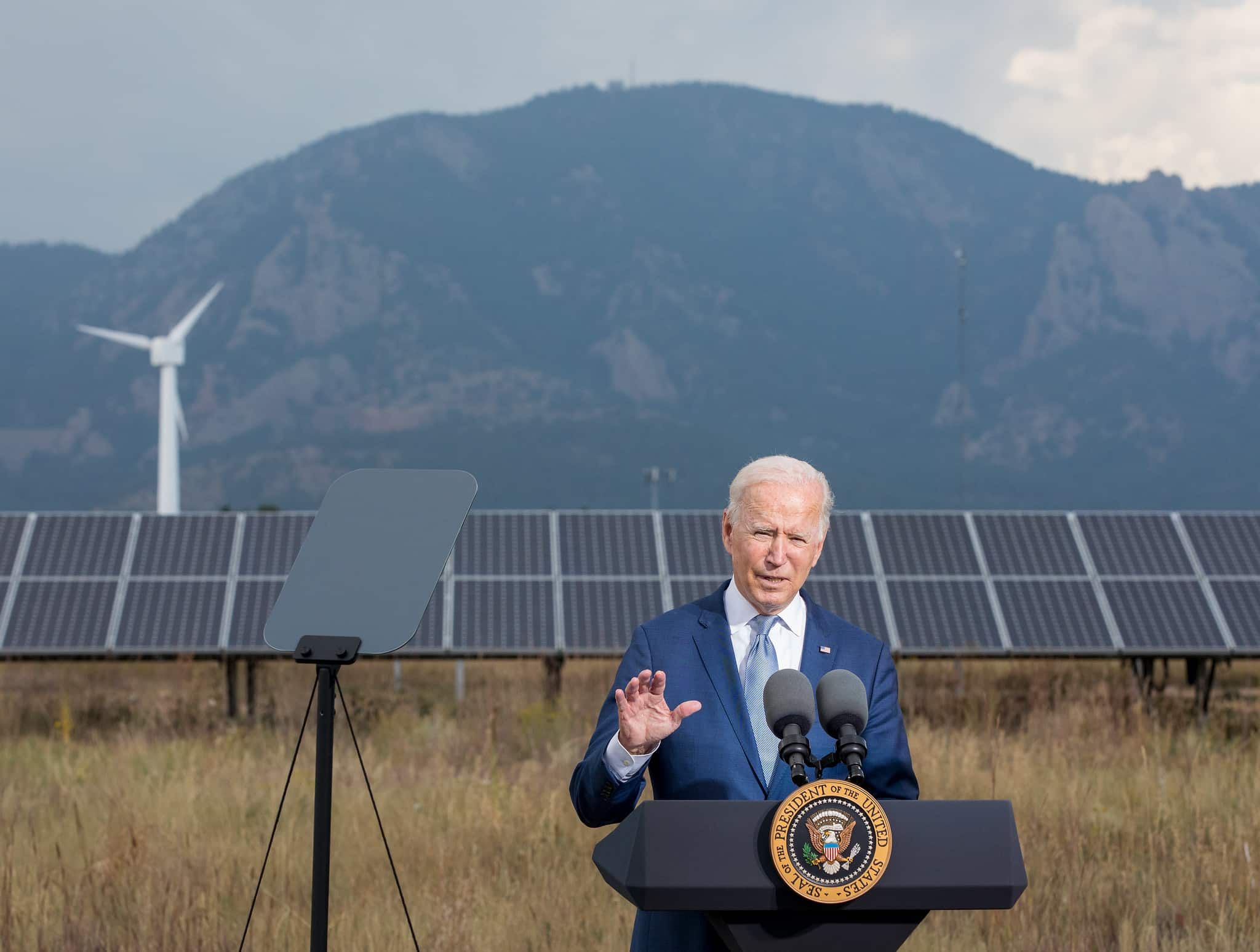This website uses cookies as well as similar tools and technologies to understand visitors’ experiences. By continuing to use this website, you consent to Columbia University’s usage of cookies and similar technologies, in accordance with the Columbia University Website Cookie Notice.
Energy Explained
Insights from the Center on Global Energy Policy
This Energy Explained post represents the research and views of the author. It does not necessarily represent the views of the Center on Global Energy Policy. The piece may be subject to further revision. Contributions to SIPA for the benefit of CGEP are general use gifts, which gives the Center discretion in how it allocates these funds. Rare cases of sponsored projects are clearly indicated.
For a full list of financial supporters of the Center on Global Energy Policy at Columbia University SIPA, please visit our website at Our Partners. See below a list of members that are currently in CGEP’s Visionary Circle. This list is updated periodically.
With inflation cooling,[1] unemployment below 4 percent,[2] and the economy growing,[3] the Biden administration is crediting “Bidenomics” for the improved economy as it prepares for the 2024 presidential election. In this Q&A, the authors discuss the importance of Bidenomics—centered around strategic public investments in key sectors—sharpening its focus on critical minerals, which was not mentioned in the president’s recent speech[4] or the White House memo on Bidenomics.
What is Bidenomics?
Known as “Bidenomics” to some, industrial policy to others, the administration’s economic policy sees the US moving away from the neoliberal, free trade paradigm that has dominated for 40 years, and toward an approach centered on public investments to spur economic growth in key sectors. President Biden has stated that his economic policy is in response to “failed trickle-down theory” and aimed at growing the economy from “the middle out and the bottom up.” According to this view, sending strategic public investment signals to private companies will encourage rather than crowd out investments, leading to an increase in domestic manufacturing.
Bidenomics has three key pillars[5]:
- Targeting public investments at industries vital to economic and national security, including the clean energy economy to combat climate change
- Empowering and educating workers
- Promoting competition in the economy
President Biden’s three major legislative successes—the Bipartisan Infrastructure Law (BIL), the CHIPS and Science Act, and the Inflation Reduction Act (IRA)—are core tenets of his economic policy. Billions of dollars are being directed to key industries like semiconductors[6] and electric vehicle (EV) batteries[7] to expand manufacturing. Bidenomics also fits into the growing Washington consensus on the need to create supply chains that are much less dependent on China.[8]
Why does a focus on critical minerals fit with Bidenomics?
Critical minerals check the boxes for the main goals of Bidenomics—enhancing national and economic security and accelerating climate progress. Arguably, Bidenomics will not reach its full potential without a strong supply chain for critical minerals. It’s unlikely that any country can completely onshore the critical mineral supply chain because concentration of reserves and permitting issues, among other reasons, hamper the creation of new mines. But permitting processes are only part of the issue; a real chokepoint is in processing. Bidenomics offers an opportunity to focus on the entire value chain. China has set an example—that the United States could follow—by investing more into domestic mineral processing. The administration’s own review on resilient supply chains states that “China’s strong supply chain position stems, in large part, from state investment in processing and manufacturing rather than an inherent advantage in reserves for most materials.”[9]
China has a near monopoly on mineral processing, even though it is not home to the largest domestic reserves. Already controlling this chokepoint, China also accounts for 70 percent of new “anticipated investments” in mineral processing.[10] It accounts for 35 percent of nickel refining, 50–70 percent for lithium and cobalt, and 90 percent for rare earths and high-purity manganese processing.[11] On the upstream mineral production side, Chinese companies are exploring and producing critical minerals at home, holding the vast majority of graphite and rare earths production, for example, while also heavily investing in mining in the Democratic Republic of the Congo, Chile, Australia, and Indonesia. For comparison, no country produces more than 20 percent of the total share of oil.[12]
Regardless of the country, this concentration of minerals poses a risk. In China’s case, it has already shown a willingness to restrict mineral exports, as it did when it disrupted rare earth exports to Japan in 2010[13] and banned exports of germanium and gallium in 2023.[14] Even if mineral exports have been fairly stable in the 2010s,[15] the risk of increasing trade barriers on minerals, especially those necessary for advanced technologies and defense, raises concerns[16] about national and economic security in the United States. The clean energy economy and semiconductors will be key growth sectors this century. Chokepoints in the mineral supply chain, particularly America’s reliance on economic competitors, threatens its growth prospects.
Above all, the energy transition will not happen without critical minerals. Clean energy technologies, as well as key components such as magnets and semiconductors, rely on minerals, including copper, lithium, nickel, cobalt, graphite, and rare earths. To meet net zero goals, the International Energy Agency predicts demand for these minerals to rise by 40–90 percent over the next two decades, requiring investments to the tune of $360 billion to $450 billion in mining and $90 billion to $210 billion in processing capabilities globally by 2030.[17]
How can Bidenomics sharpen its focus on critical minerals?
Strategic Public Investments
The US, which now exports domestic critical minerals for processing, was once a global leader in mineral production and processing.[18] In the 1990s and 2000s, a “servicification” of the economy and outsourcing of manufacturing and chemical processing made the US more reliant on Chinese supply.
The Biden administration’s goals for electrification and EV uptake require significant mineral resources,[19] and there have been several investment announcements in the battery supply chain through the Defense Production Act (DPA), BIL, CHIPS Act, and IRA. International programs like the Mineral Security Partnership (MSP) will also strengthen supply chains. For example, the US could continue to build partnerships with allies that are mineral-rich countries through the MSP, mindful that other countries will also want to capture parts of the value chain beyond upstream.[20]
But these efforts are not sufficient to meet US demand or loosen China’s hold on the critical minerals supply chain. While upstream production has long lead times and complicated permitting procedures, public investments in mineral processing could allow the United States to “re-onshore” a key sector of the mineral supply chain earlier, taking advantage of its strong relationships with mineral-rich Canada, Australia, Chile, and other free trade agreement (FTA) partners. The administration’s supply chain review labeled processing a “critical gap” and stated that expanding processing would be a “promising pathway to securing the supply chain.”[21]
The IRA has started creating a dent through tax credits that processing facilities could invoke, such as the Advanced Manufacturing Production Credit (45X) and the Qualifying Advanced Energy Project Credit (48C). While this is useful, the local content requirements for the demand-side EV tax credits (30D) are linked to FTA countries in the case of critical minerals, whereas those for battery components require North American production. In other words, the IRA recognizes that it will take longer to re-onshore production and processing of critical minerals.
Bringing in private investors at the early stages of building processing facilities—through the DPA, Department of Energy, and other funding mechanisms—could accelerate the re-onshoring. The IRA provided a blueprint for re-onshoring important parts of the battery supply chain, such as cell manufacturing, in the short term. Now more policy and investment support will benefit projects with longer lead times and high capital requirements, specifically in processing capacity. The investments-focused 48C tax credit can support construction of processing facilities through the long permitting process—although it is capped at $10 billion, with the credit shared among clean energy manufacturing projects.[22]
Workers
Even as the Biden administration invests in economy-wide apprenticeships and career technical education programs, the mining and chemical processing industry deserves greater attention to build a strong supply chain. Reducing reliance on China is not only about securing critical mineral supply, but also ensuring domestic labor supply and international partnerships to process those minerals into chemical compounds that can be used in technologies.
The Society for Mining, Metallurgy, and Exploration warns that “finding and retaining skilled labor is likely to be a lasting problem for mining companies,” with the potential for a significant lack of skilled labor by 2029 due to retirements.[23] For younger skilled labor, international competition for talent is intense, requiring updated labor policies and associated migration policies.
The gap in skilled labor is already impacting the mining industry. Lack of talent is interfering with production targets, according to 71 percent of mining companies,[24] and 73 percent believe “local skill gaps” are the biggest barriers to bringing in new technology to advance projects.[25]
The clock is ticking: the labor gap will only increase as the US tries to ramp up mining and processing to meet demand, electrification, and EV goals. The US Government Accountability Office acknowledges there is “limited expertise in the workforce to fill highly technical expert positions.”[26] The federal government could help solve this issue, with the Biden administration potentially working with industry, community colleges, and technical schools in mining regions to assist students in obtaining the skills and credentialing needed for the workforce. At the same time, the United States needs to attract more highly skilled workers like mining engineers and metallurgy experts.
Solutions to consider include increasing congressional funding for critical-minerals-related programs created through the BIL, supporting the bipartisan Mining Schools Act of 2023 to increase funding for the dwindling number of mining degree programs,[27] and reviewing labor and migration policies to offer young talent viable long-term career paths in this sector and the country.
CGEP’s Visionary Circle
Corporate Partnerships
Occidental Petroleum Corporation
Tellurian Inc
Foundations and Individual Donors
Anonymous
Anonymous
the bedari collective
Jay Bernstein
Breakthrough Energy LLC
Children’s Investment Fund Foundation (CIFF)
Arjun Murti
Ray Rothrock
Kimberly and Scott Sheffield
[1] https://www.bls.gov/news.release/pdf/cpi.pdf
[2] https://fred.stlouisfed.org/series/UNRATE
[3] https://www.bea.gov/data/gdp/gross-domestic-product
[4] https://www.whitehouse.gov/briefing-room/speeches-remarks/2023/06/28/remarks-by-president-biden-on-bidenomics-chicago-il/
[5] https://www.whitehouse.gov/briefing-room/statements-releases/2023/06/28/bidenomics-is-working-the-presidents-plan-grows-the-economy-from-the-middle-out-and-bottom-up-not-the-top-down/
[6] https://www.whitehouse.gov/briefing-room/statements-releases/2022/08/09/fact-sheet-chips-and-science-act-will-lower-costs-create-jobs-strengthen-supply-chains-and-counter-china/
[7] https://www.pbs.org/newshour/economy/u-s-awards-2-8-billion-in-grants-for-electric-vehicle-batteries-in-12-states
[8] https://www.reuters.com/business/autos-transportation/us-lawmakers-press-automakers-cut-reliance-china-over-supply-chains-bloomberg-2023-06-19/
[9] https://www.whitehouse.gov/wp-content/uploads/2021/06/100-day-supply-chain-review-report.pdf
[10] https://iea.blob.core.windows.net/assets/a86b480e-2b03-4e25-bae1-da1395e0b620/EnergyTechnologyPerspectives2023.pdf
[11] https://www.iea.org/reports/the-role-of-critical-minerals-in-clean-energy-transitions/executive-summary
[12] https://www.eia.gov/tools/faqs/faq.php?id=709&t=6
[13] https://www.cnbc.com/id/39318826
[14] https://www.reuters.com/markets/commodities/chinas-controls-take-effect-wait-gallium-germanium-export-permits-begins-2023-08-01/
[15] https://cepr.org/voxeu/columns/revisiting-china-japan-rare-earths-dispute-2010
[16] https://www.whitehouse.gov/wp-content/uploads/2021/06/100-day-supply-chain-review-report.pdf
[17] https://www.iea.org/reports/energy-technology-perspectives-2023
[18] https://nma.org/wp-content/uploads/2016/09/NMA_Report_Mines_to_Market_FINAL.pdf
[19] https://www.energypolicy.columbia.edu/not-all-evs-are-equal-why-its-important-to-focus-on-battery-size-and-chemistry/
[20] https://www.cnbc.com/2022/04/14/indonesia-wants-to-stop-exporting-minerals-make-value-added-products.html
[21] Ibid.
[22] https://www.energy.gov/infrastructure/qualifying-advanced-energy-project-credit-48c-program
[23] https://www.smenet.org/What-We-Do/Technical-Briefings/Workforce-Trends-in-the-US-Mining-Industry
[24] https://www.mckinsey.com/industries/metals-and-mining/our-insights/has-mining-lost-its-luster-why-talent-is-moving-elsewhere-and-how-to-bring-them-back
[25] https://www.pwc.com/gx/en/industries/energy-utilities-resources/publications/mine.html#talent
[26] https://www.gao.gov/assets/gao-22-104824.pdf
[27] https://www.energy.senate.gov/2023/3/manchin-barrasso-introduce-bipartisan-legislation-to-boost-domestic-mining-workforce
More on Energy Explained Energy Explained
How the US–Japan Critical Minerals Partnership Is a Long-Overdue Step Toward Real Supply-Chain Security
The new critical minerals agreement between Japan and the US is more than yet another bilateral trade announcement.

Q&A: How the US Is Using Equity Stakes to Support Domestic Critical Minerals Development
The Trump administration is increasingly using equity investments as a tool of industrial policy to support domestic critical minerals supply chains.

Assessing the Energy Impacts of the One Big Beautiful Bill Act
This special CGEP blog series, featuring six contributions from CGEP scholars, analyzes the potential impacts of the OBBBA across a range of sectors.

MP Materials Deal Marks a Significant Shift in US Rare Earths Policy
The US Department of Defense has announced a multibillion-dollar public-private partnership with MP Materials.

Relevant
Publications
Five Key Decisions to Revitalize US Critical Mineral Stockpiles
The report outlines five foundational choices if a stockpiling strategy is adopted, as bipartisan support suggests is possible.
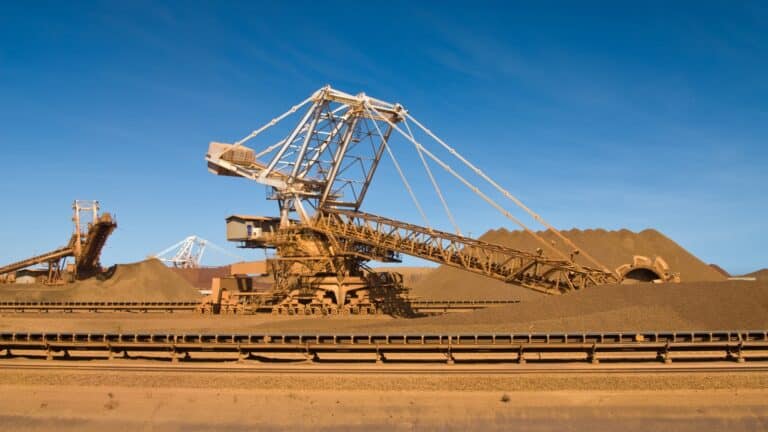
DeepDive: A new strategy for resilient global leadership in natural resources and manufacturing
Natural resources and critical minerals are more important than ever. Here's how Canada can be a global leader
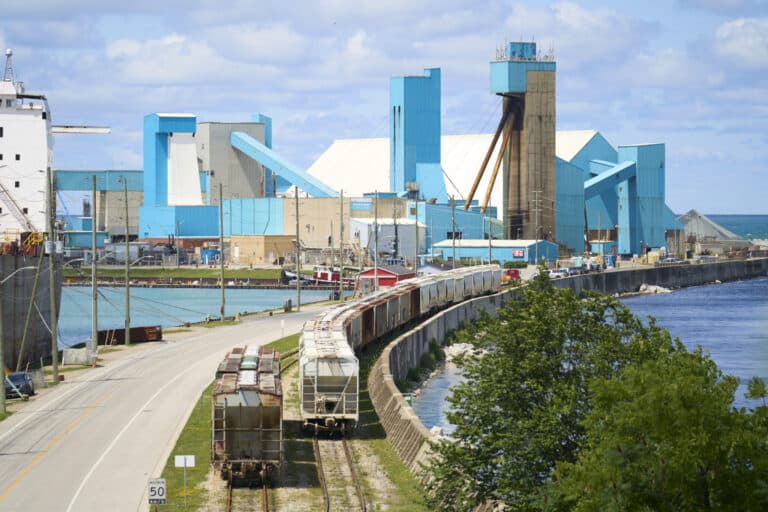
Assessing the Policy Ecosystems and Scaling Pathways of Direct Lithium Extraction
Lithium plays a critical role in the global energy transition. It is the core ingredient of lithium-ion batteries that power electric vehicles (EVs) and are used in stationary energy storage systems.
